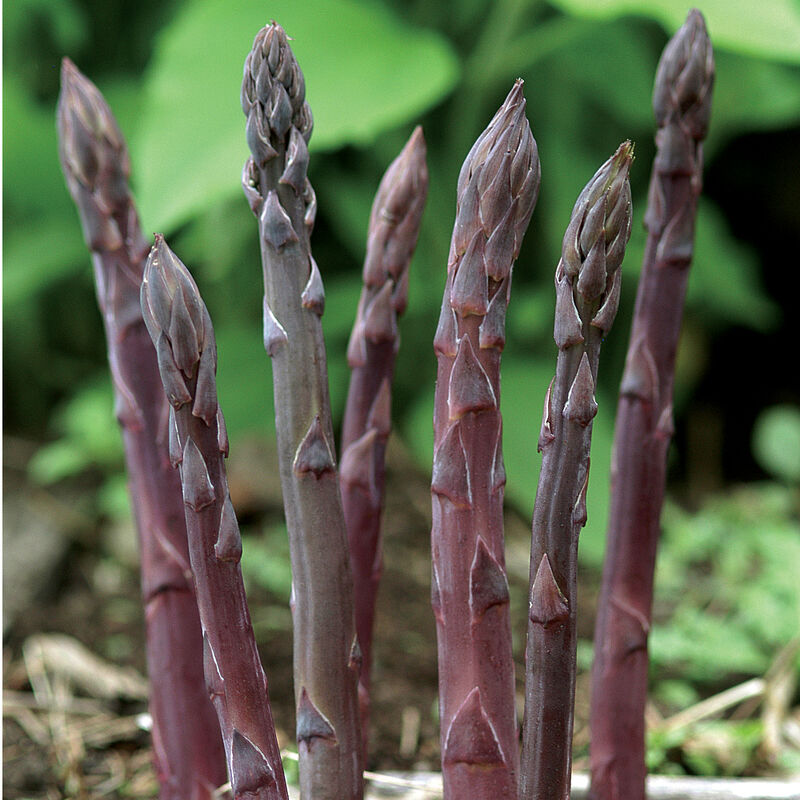How to plant asparagus crowns is one of the first things to learn if you want a long-lasting, low-maintenance vegetable in your garden. Asparagus is a perennial crop that, once established, will produce fresh spears every spring for 15 years or more. While it does require some patience at first, proper planting and care will ensure a bountiful harvest for years to come.

Why Grow Asparagus?
Asparagus is one of the first vegetables to grow in early spring, making it a valuable addition to any home garden. Because it’s a perennial, planting asparagus requires some patience but it will pay off over time. Once established, it requires minimal upkeep and produces delicious, nutrient-rich spears season after season.
When To Plant Asparagus Crowns
Asparagus crowns can be planted anytime between November to April when is workable but before the temperatures rise too much. The crowns-dormant roots of one-year-old asparagus plants-need cool, moist soil to establish strong root systems before summer heat sets in.
How to Plant Asparagus Crowns
To give your asparagus the best start, follow these steps:
1. Choose the Right Location
Asparagus thrives in full sun, so pick an area that gets at least 6-8 hours of sunlight per day. Pick an area with well draining soil. Since asparagus is a perennial, select a spot where the plants can grow undisturbed for many years.
2. Prepare the Soil
Before planting, loosen the soil and mix in plenty of compost or aged manure. Asparagus prefers well draining soil, so consider a raised bed if you have heavy clay or poor draining soil.
3. Dig the Planting Trench
Dig a hole about 6-8 inches deep and 12 inches wide. Space the holes about 3 feet apart if you are planting multiple rows. You want the crowns to be able to establish a strong root system while protecting the developing spears.
4. Plant the Asparagus Crowns
Place the asparagus crowns in the hole, spacing them 18 inches apart. Spread out the roots gently, then cover them with 2-3 inches of soil.
5. Water and Mulch
After planting water the crowns thoroughly to help them settle in. Adding a layer of mulch will help retain moisture and stop weeds. Keep soil moistened but not waterlogged during the first growing season.
Caring for Your Asparagus Patch
- Weed Control: Keep the area around your asparagus bed weed free, as they compete with nutrients.
- Fertilizing: Apply a layer of compost in early spring.
- Patience the First Few Years: Avoid harvesting spears the first year to allow the plants to establish deep roots. By the second year you can pick a light harvest and a little more the third.
Harvesting Asparagus
Once your asparagus plants are established, you can start harvesting the spears when they are about 6-8 inches tall. Use a sharp knife or scissors to cut the spears near the ground. Harvesting usually lasts about 6-8 weeks in spring. Stop harvesting once the spears become thin, allowing the plants to store energy for the next season. The plant will turn into a large fern. It is best to stake them so you wrap a string around them and secure them to the stake. Once the plant has died back in winter you can cut back the fern in preparation for new growth.
Conclusion On How to Plant Asparagus Crowns
Learning how to plant asparagus crowns properly will reward you with a steady supply of fresh, homegrown asparagus for years to come. With the right location, soil preparation and care, you’ll enjoy one of the most rewarding and long-lived crops in the garden.
